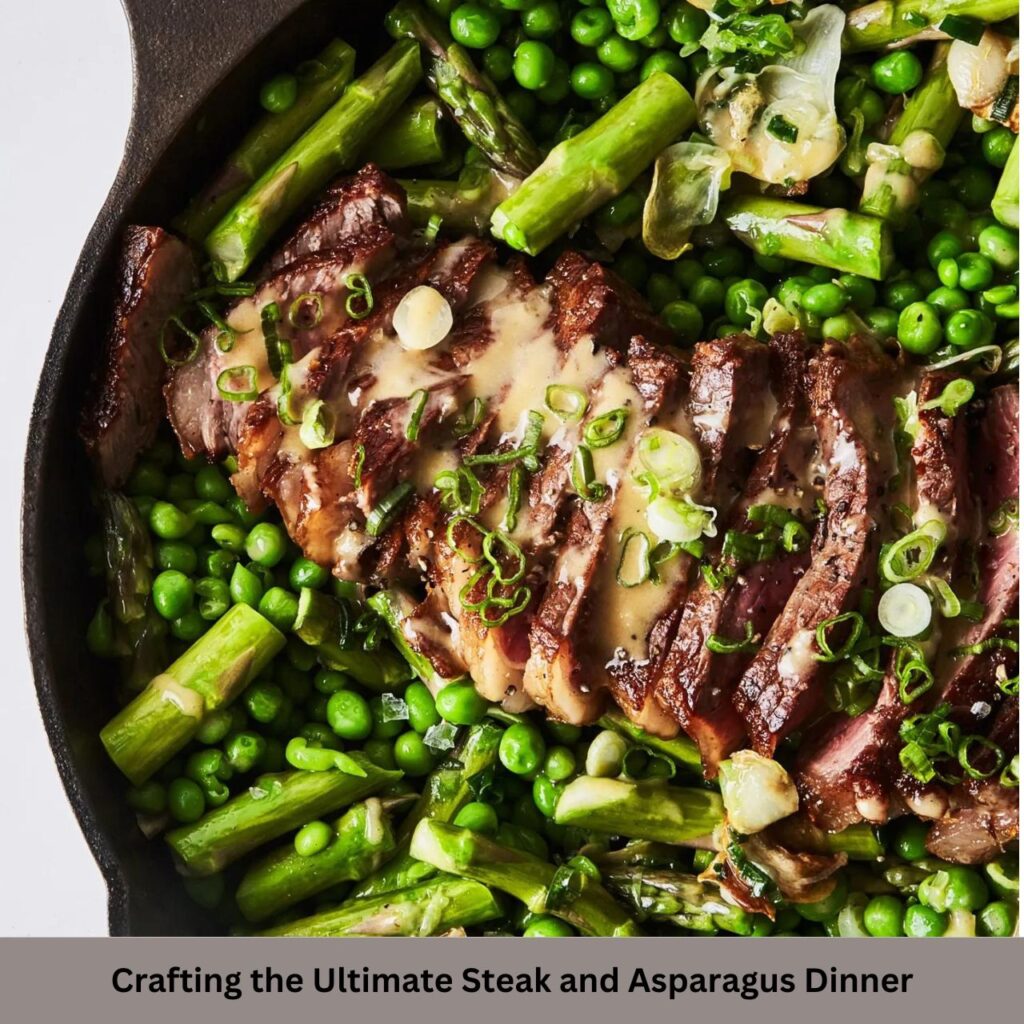Dumpling wrappers are the foundation of many beloved dishes across the globe. Whether steamed, boiled, or fried, they serve as the delicate casing for a world of flavors. Thin and malleable, these wrappers may seem simple at first glance, but their role is vital to the success of the dumpling. Each fold and pleat holds a story, passed down through generations, rooted in tradition and technique. Understanding dumpling wrappers goes beyond the surface—it’s about appreciating the craftsmanship that turns flour and water into a canvas for culinary artistry. From the familiar potsticker to the exotic shumai, every dumpling starts with the wrapper.
Understanding The Basics Of Dumpling Wrappers
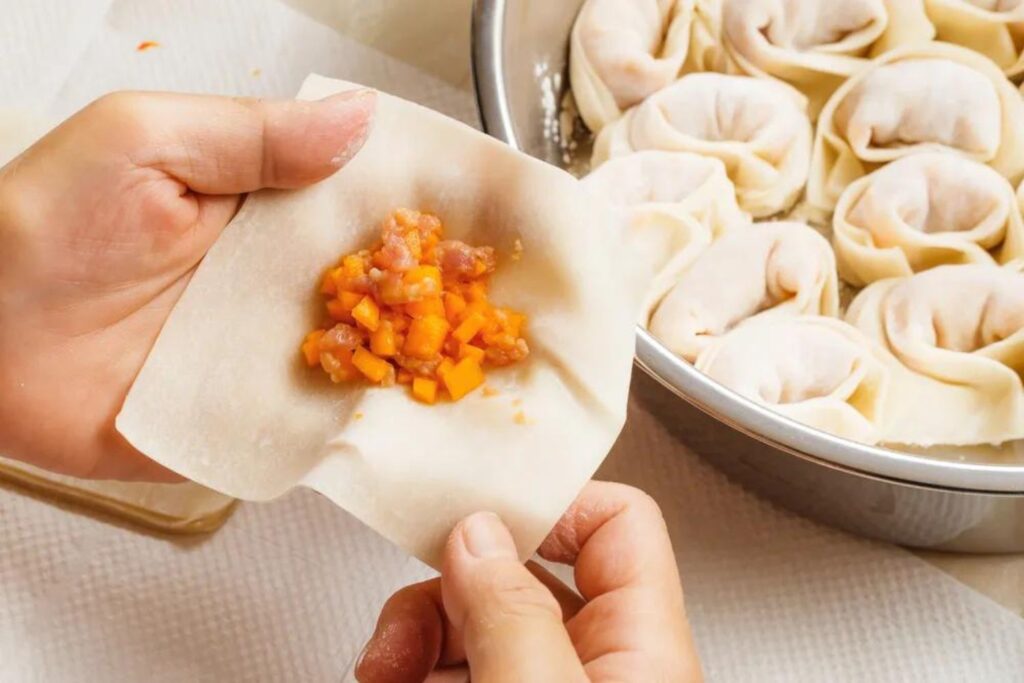
Dumpling wrappers are thin sheets of dough used to encase various fillings, from vegetables to meats. They are traditionally made from a mixture of flour and water, though different regions and cuisines may introduce slight variations in ingredients. The pliability and thickness of the wrapper are key factors that influence the overall texture of the dumpling. Wrappers must be strong enough to hold the filling but delicate enough to yield a satisfying bite. Whether you’re making them by hand or buying pre-made wrappers, understanding their texture and consistency is essential for creating the perfect dumpling experience. When done right, dumpling wrappers enhance the filling, providing a complementary texture to the delicious core.
Why Make Your Dumpling Wrappers?
While store-bought dumpling wrappers may be convenient, there’s something uniquely satisfying about making your own. Handmade wrappers offer a fresher taste, better texture, and a deeper connection to the cooking process. By creating them from scratch, you can control every aspect—from the thickness to the ingredients—ensuring they perfectly complement your filling. Moreover, the act of rolling and shaping the dough offers a therapeutic rhythm, connecting you to centuries-old traditions. Whether you’re aiming for a specific texture or simply seeking an authentic experience, homemade dumpling wrappers allow for greater creativity and personalization. The pride in crafting each wrapper makes the effort worthwhile.
The Essential Ingredients for Dumpling Wrappers
The most basic dumpling wrapper recipe calls for just three ingredients: flour, water, and salt. Flour provides the structural foundation, with different types offering varying results. Water hydrates the flour, activating gluten and giving the dough its elasticity. Salt, though often overlooked, enhances the dough’s flavor and helps regulate the hydration process. Some recipes might include a small amount of oil to add suppleness, though this is not traditional in all methods. The simplicity of the ingredients is deceptive. Achieving the perfect balance of texture and flavor requires precision and an understanding of how each component interacts within the dough.
Types Of Flour For Dumpling Wrappers
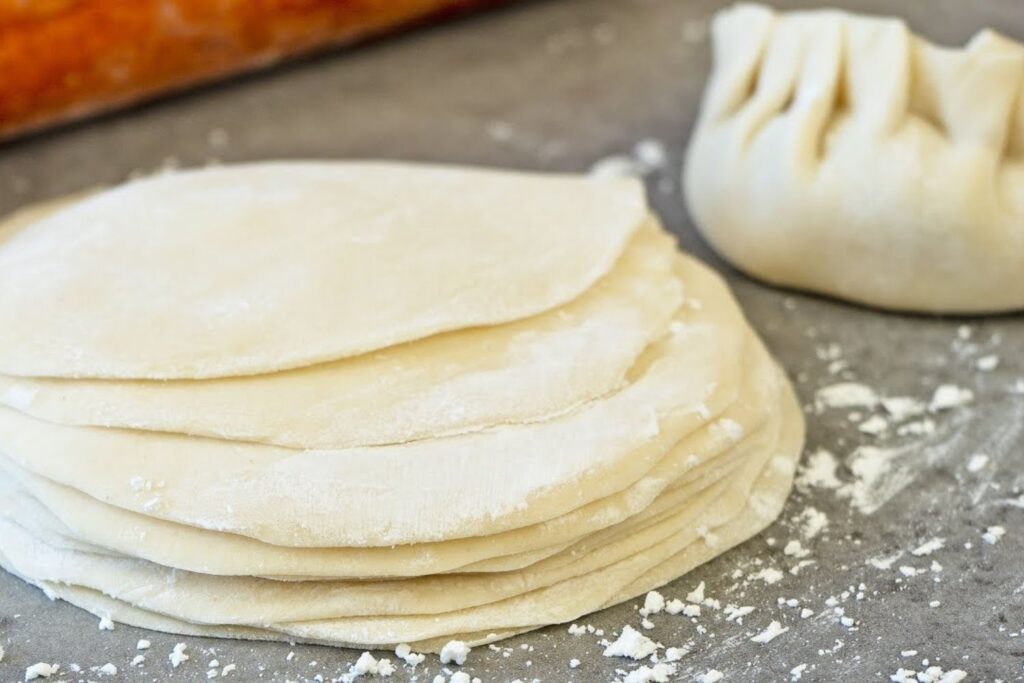
Flour is the cornerstone of any dumpling wrapper, but the type you choose can dramatically affect the final product. All-purpose flour is commonly used due to its accessibility and versatility, but for a more refined texture, some opt for cake flour, which creates a more delicate wrapper. On the other hand, bread flour, with its higher gluten content, yields a chewier, more resilient dough. Each type of flour provides a different eating experience, and selecting the right one is key to achieving the desired result. Some might even experiment with blends of flours to craft the perfect balance between tenderness and strength.
Choosing the Right Water Temperature
The temperature of the water used in dumpling wrapper dough can have a significant impact on the final texture. Hot water creates a dough that is more elastic and easier to stretch, making it ideal for boiled or steamed dumplings. It also helps in forming softer, thinner wrappers that maintain their delicate texture. Cold water, in contrast, results in a firmer dough with more bite, perfect for fried dumplings that need to hold their shape under intense heat. Understanding the role of water temperature allows for greater control over the final texture of the dumplings, catering to specific cooking methods.
The Importance of Salt in Dumpling Dough
Salt plays a subtle but critical role in dumpling wrapper dough. Beyond simply enhancing flavor, it also helps to strengthen the gluten network within the dough, making it easier to work with. The salt controls the water absorption in the flour, ensuring the dough remains pliable without becoming too sticky or brittle. Too much salt can toughen the dough, making it difficult to roll out, while too little might result in wrappers that lack structure. Balancing the salt content is a key step in crafting the perfect dumpling wrapper, offering just the right amount of seasoning and workability.
Traditional vs. Modern Dumpling Wrappers
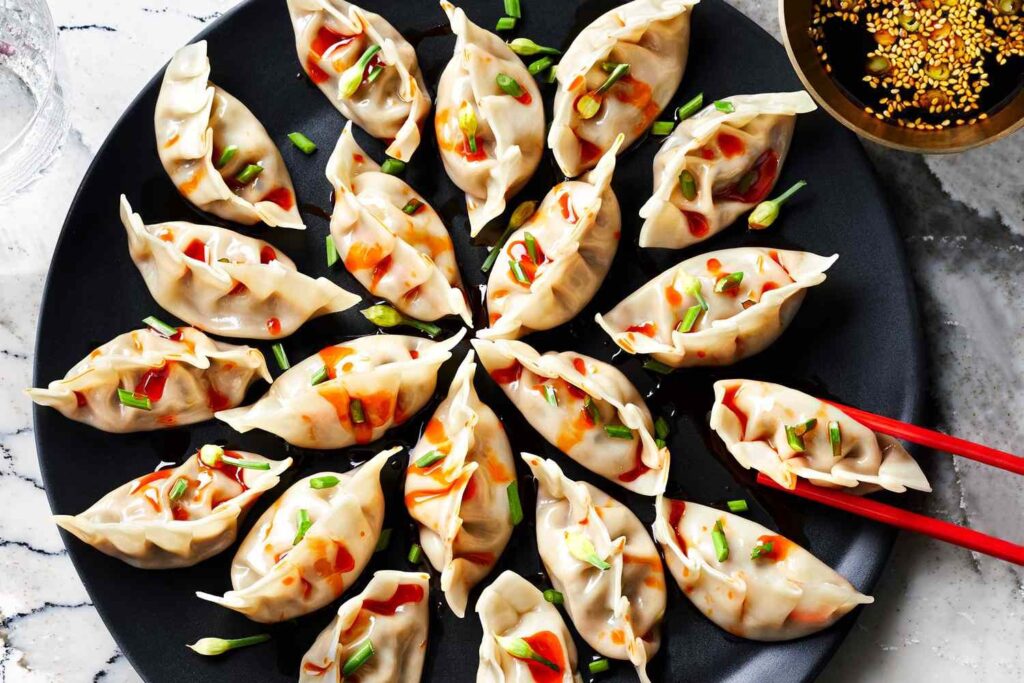
Dumpling wrappers have been made by hand for centuries, with little variation in technique or ingredients. These wrappers, often simple and unadorned, allow the filling to shine while maintaining its delicate texture. However, modern cooking methods and ingredients have introduced new possibilities. From incorporating alternative flours to experimenting with dough enhancers, contemporary dumpling wrappers can offer a variety of textures and flavors. Some modern adaptations might even include gluten-free options, catering to different dietary needs. While tradition offers tried-and-true methods, modern innovation allows for a more personalized approach to dumpling-making.
Dumpling Wrappers for Different Cuisines
Different cuisines feature their take on dumpling wrappers. In Chinese cooking, wrappers are typically thin and delicate, designed for dishes like xiao long bao and jiaozi. Japanese dumplings like gyoza, on the other hand, often use a slightly thicker wrapper for a heartier bite. In contrast, Korean mandu wrappers may be chewier and more substantial, depending on whether they’re steamed, boiled, or fried. Understanding these regional variations is essential for anyone looking to explore dumpling-making across different cuisines. Each wrapper style is tailored to the specific cooking method and filling, adding a unique touch to each dish.
Handmade vs. Store-bought Dumpling Wrappers
The debate between handmade and store-bought dumpling wrappers is one of convenience versus craftsmanship. Store-bought wrappers are undeniably convenient, offering uniformity and saving time. However, handmade wrappers provide an unmatched level of freshness, texture, and personalization. When making them by hand, you can adjust thickness, experiment with different flours, or even tweak the dough’s elasticity. The tactile experience of kneading and rolling the dough also adds an extra layer of satisfaction to the cooking process. While store-bought wrappers might be a practical solution for a quick meal, handmade wrappers elevate the entire dish.
Step-by-Step Process: How to Make Dumpling Wrappers from Scratch?
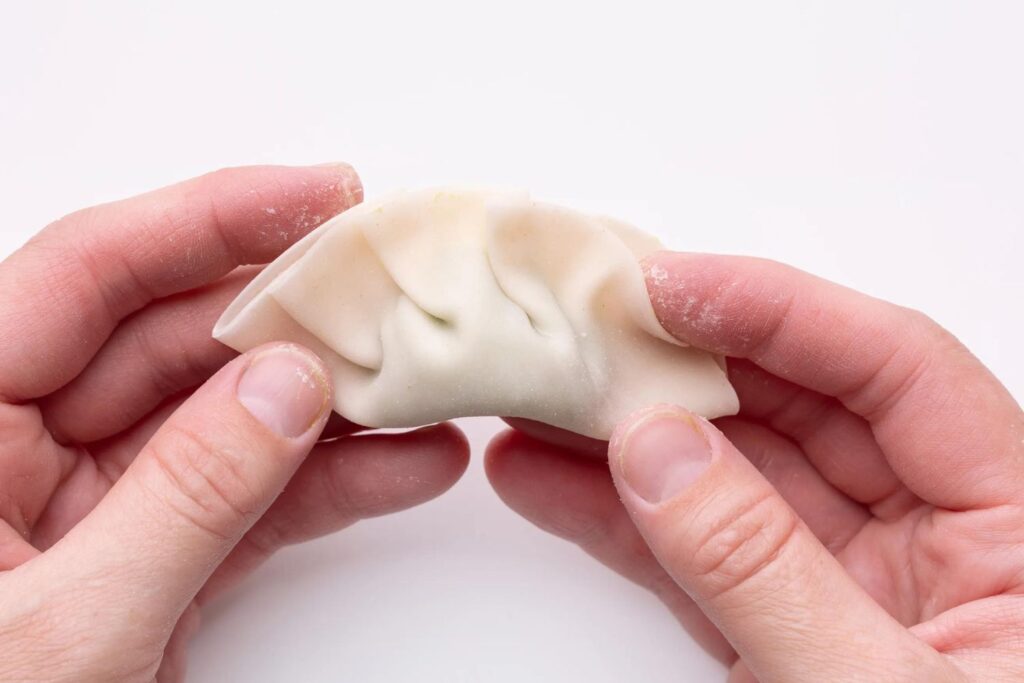
Making dumpling wrappers from scratch requires patience and practice. First, mix the flour and water until a rough dough forms. Then, knead the dough until smooth, allowing the gluten to develop for elasticity. After kneading, let the dough rest—this relaxes the gluten, making it easier to roll out. Once rested, divide the dough into small portions and roll each one into a thin, even circle. The goal is to achieve a uniform thickness across each wrapper, ensuring consistent cooking. By following these steps, you’ll create dumpling wrappers that are fresh, pliable, and perfect for any filling.
Mixing the Dough: Key Techniques
The process of mixing dumpling dough begins by combining flour with water in a measured manner. Adding the water gradually ensures that the flour absorbs it evenly, avoiding dry patches. It’s essential to use a circular motion to bring the dough together without overworking it initially. Mixing activates the gluten, giving the dough structure. If using hot water, the dough will become softer and more pliable, while cold water creates a firmer texture. Achieving the right balance in mixing sets the stage for proper dough elasticity, a critical factor for rolling and shaping.
Kneading the Dough to Perfection
Kneading is a crucial step in developing the gluten in the dumpling dough. Proper kneading ensures that the dough is smooth, elastic, and strong enough to hold its shape when rolled out. The process involves folding and pressing the dough repeatedly, which encourages gluten formation. The dough should become less sticky and more supple with time. If kneaded too little, the dough will lack the necessary structure; too much kneading, and could become tough. Achieving the perfect balance ensures the wrappers will be soft yet resilient, with the ability to stretch thin without tearing.
Resting the Dough: Why It’s Crucial
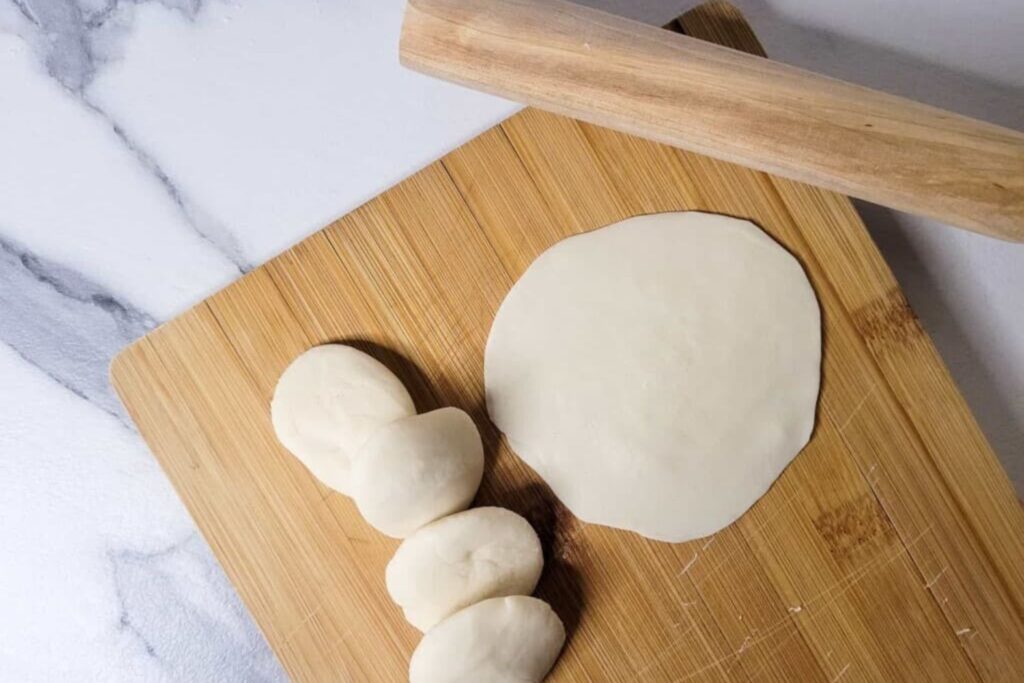
After kneading, allowing the dough to rest is essential. During this resting period, the gluten relaxes, making the dough easier to work with. This relaxation prevents the dough from springing back when rolled out, allowing for thinner, more uniform wrappers. Resting also allows the moisture in the dough to distribute evenly, creating a smoother texture. Skipping this step can result in a dough that is tough to shape. The resting period typically lasts for about 30 minutes to an hour, though it can vary depending on room temperature and dough consistency.
How to Roll Out Dumpling Wrappers?
Rolling out dumpling wrappers requires a delicate touch. Start by dividing the dough into small, even portions. Using a rolling pin, apply even pressure as you roll the dough outwards from the center, rotating it as you go to maintain a circular shape. The goal is to achieve a thin, uniform wrapper that’s slightly thicker in the center to hold the filling without tearing. Precision is key here. Too thick, and the dumpling will be doughy; too thin, and it risks falling apart during cooking. Mastering this technique takes time but is worth the effort.
Creating the Perfect Dough Thickness
The thickness of a dumpling wrapper can make or break the dish. A well-rolled wrapper should be thin enough to cook evenly but thick enough to hold the filling without bursting. For most dumplings, the ideal thickness is around 1 to 2 millimeters. Thinner wrappers are best for steamed dumplings, where a delicate texture is desired, while slightly thicker wrappers work well for boiled or fried dumplings, where durability is key. Striking the right balance in thickness ensures a dumpling that holds up during cooking while providing a tender bite.
Shaping Dumpling Wrappers: Techniques For Different Styles
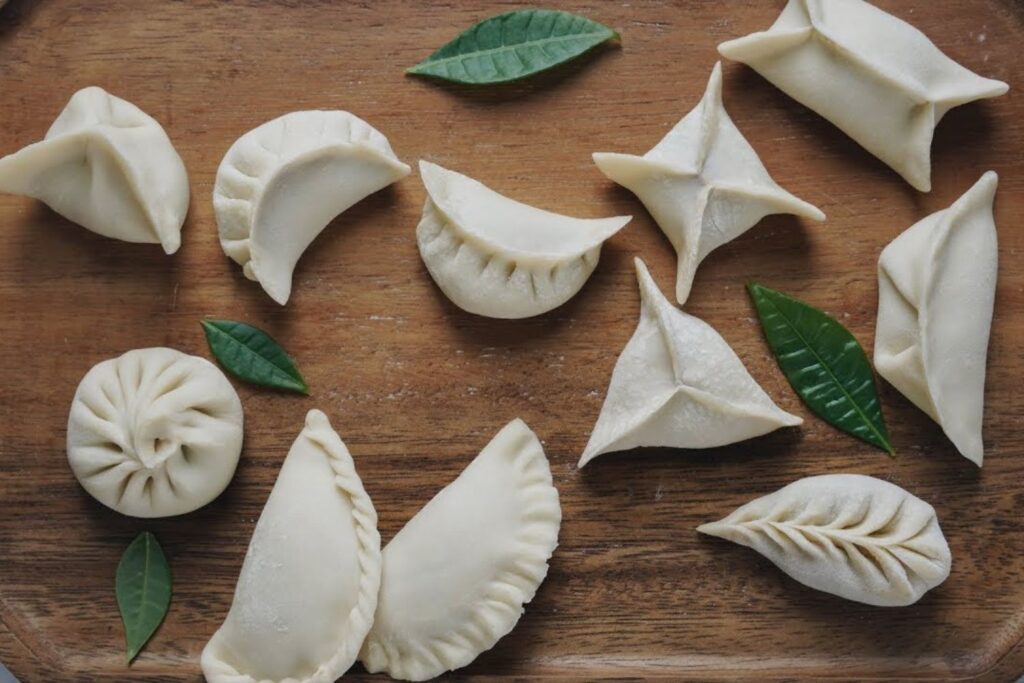
Dumpling wrappers is an art form in itself, with different cuisines and regions favoring various styles. From simple folds to intricate pleats, the way you shape your dumplings affects both their appearance and how they cook. The classic crescent-shaped dumpling is achieved by folding the wrapper over the filling and pleating one side before sealing. For round dumplings like shumai, the wrapper is gathered around the filling and pinched at the top. Each style requires a different technique but ultimately contributes to the dumpling’s texture, cooking time, and aesthetic appeal.
Cutting Dumpling Wrappers for Uniformity
Uniformity in dumpling wrappers ensures even cooking and a consistent bite. After rolling out the dough, use a round cutter to cut the wrappers into precise circles. This method ensures that each wrapper is the same size, which is important when cooking a large batch. If the wrappers are uneven, some may cook faster than others, leading to inconsistency in texture. A sharp cutter also helps create clean edges, preventing the dough from fraying or tearing. Achieving uniform wrappers is key to professional-quality dumplings.
How to Keep Dumpling Wrappers from Drying Out?
Dumpling wrappers dry out quickly once exposed to air, making them difficult to work with. To prevent this, always cover your unused dough and wrappers with a damp cloth or plastic wrap while you work. If the wrappers dry out, they become brittle and crack, making them impossible to shape properly. Working in small batches can help manage the dough and keep it fresh. Another trick is to lightly mist the wrappers with water if they start to dry. Moisture retention is crucial for maintaining the flexibility of the dough.
Adjusting The Dough For Climate and Humidity
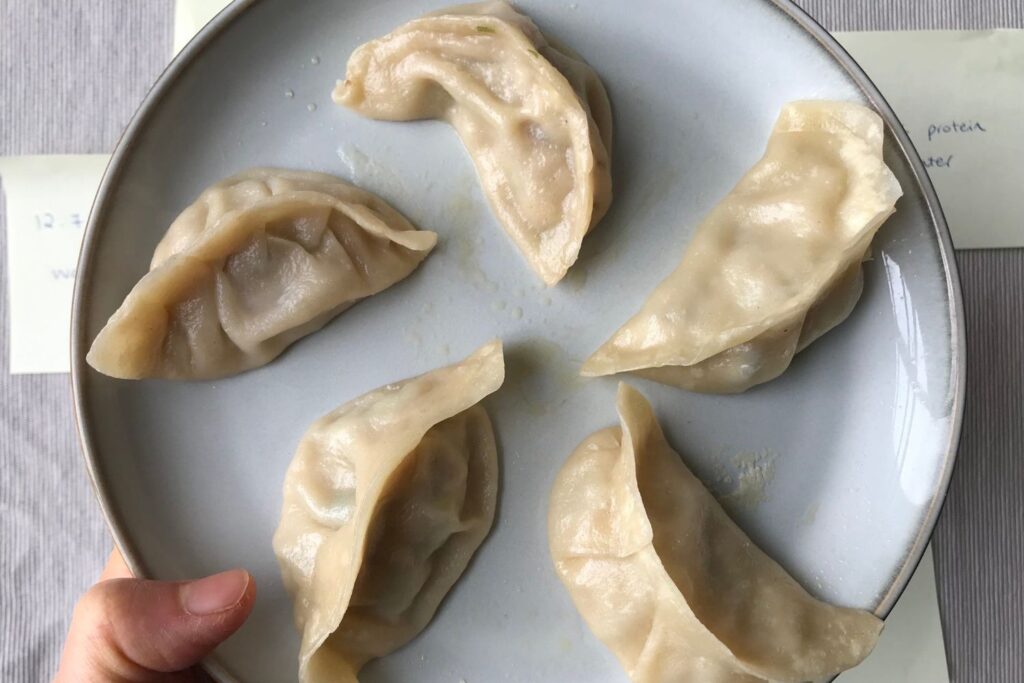
Climate and humidity can significantly affect the texture of dumpling dough. In humid environments, the dough may become too sticky, requiring additional flour to achieve the right consistency. In drier climates, the dough can dry out faster, making it necessary to add more water or shorten the resting time. Paying attention to your surroundings and adjusting your recipe accordingly ensures that the dough remains easy to work with. The key is to be flexible—what works on one day may need to be tweaked the next based on the weather.
How to Make Dumpling Wrappers in Advance?
Making dumpling wrappers in advance can save time, especially when preparing a large batch. Once the dough is made and rolled out, the wrappers can be stored for later use. If planning to use them the same day, cover the wrappers with a damp cloth or plastic wrap to prevent them from drying out. If making them further in advance, consider freezing them. Pre-making dumpling wrappers allows for a more relaxed cooking experience, giving you more time to focus on the fillings and cooking process.
How to Store Dumpling Wrappers?
Proper storage of dumpling wrappers is essential to maintain their texture and prevent them from drying out. For short-term storage, place the wrappers in an airtight container, separating each one with parchment paper to avoid sticking. If storing for a longer period, consider freezing them in stacks with parchment between each wrapper. This ensures they remain pliable and easy to use when you’re ready to cook. Proper storage techniques are crucial to keeping homemade wrappers fresh and flexible for future use.
Freezing Dumpling Wrappers For Long-Term Use
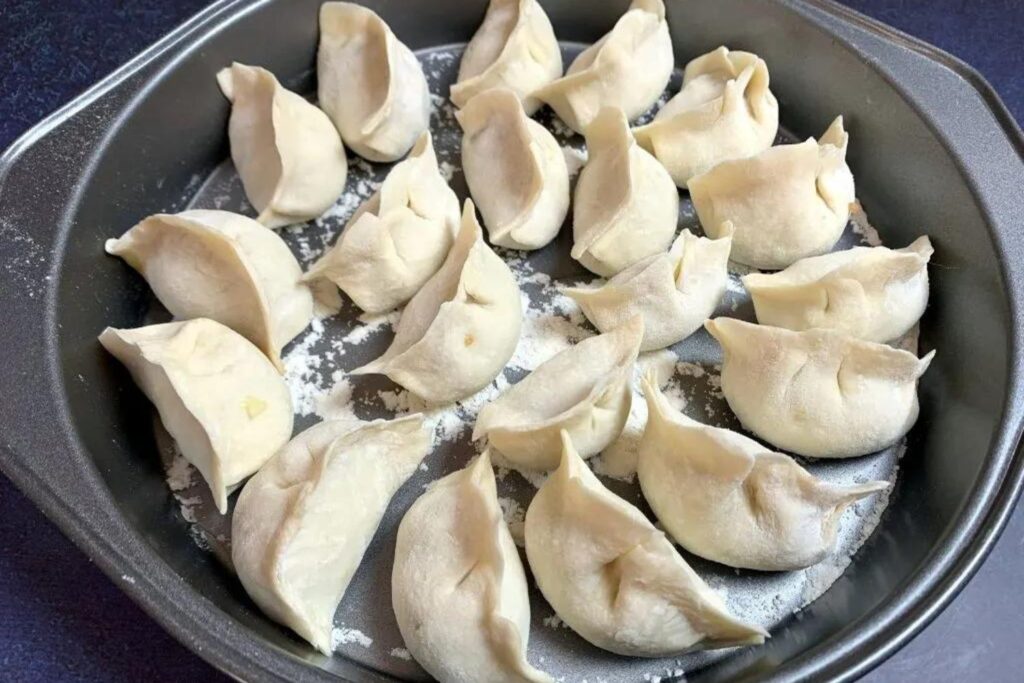
Dumpling wrappers is an excellent way to extend their shelf life. To freeze them, stack the wrappers with parchment paper between each one, then place the stack in a freezer-safe bag. Squeeze out as much air as possible before sealing the bag to prevent freezer burn. When properly frozen, dumpling wrappers can last for up to three months. When ready to use, simply thaw them at room temperature. Freezing allows you to make large batches in advance, saving time while preserving the quality of the wrappers.
Rehydrating Dumpling Wrappers: A Step-by-Step Guide
If your dumpling wrappers have dried out slightly, there’s still hope. Rehydrating them can restore their pliability. Begin by lightly misting the wrappers with water using a spray bottle. Then, cover them with a damp cloth for 5 to 10 minutes to allow the moisture to penetrate. Be careful not to over-wet the wrappers, as they can become too sticky to work with. This simple step-by-step method can bring your wrappers back to life, ensuring they remain flexible and easy to handle.
Troubleshooting Common Dumpling Wrapper Issues
Common issues with dumpling wrappers include dough that’s too sticky, wrappers that tear easily, or dough that’s too tough to roll out. If the dough is too sticky, adding a small amount of flour during kneading can help. Tearing usually occurs when the dough is rolled too thin or if the gluten isn’t developed enough during kneading. If the dough is tough, it may be due to over-kneading or insufficient resting time. Identifying these issues early can help you adjust your process and ensure perfect wrappers.
Delicious Recipes You Can Make Using Homemade Dumpling Wrappers
Homemade dumpling wrappers can be used to make a variety of delicious recipes, from classic Chinese dumplings like jiaozi and xiao long bao to Japanese gyoza or Korean mandu. Vegetarian fillings made from mushrooms, tofu, and vegetables offer a lighter option, while pork, chicken, or shrimp fillings provide a heartier bite. Dumplings can be steamed, boiled, or pan-fried, each method creating a unique texture. Once you’ve mastered the art of making wrappers, the possibilities are endless. Experiment with different fillings and cooking techniques to find your favorite.
YouTube Video
Conclusion
Mastering the art of dumpling wrappers at home is a rewarding journey. It requires patience, practice, and attention to detail, but the results are well worth the effort. From selecting the right ingredients to perfecting your technique, each step in the process contributes to the overall quality of the dumplings. Once you’ve honed your skills, you’ll never look at store-bought wrappers the same way again. Homemade dumpling wrappers provide a fresher, more authentic taste that enhances any filling. With time and practice, you can elevate your dumpling-making experience to new heights.

